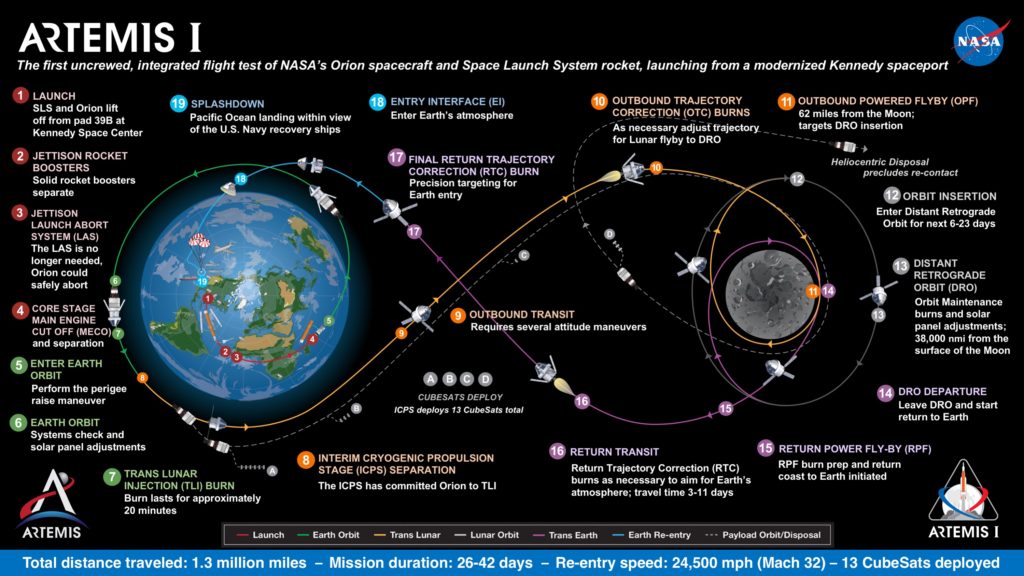
The deorbiting satellites pose zero collision risk with other satellites and by design demise upon atmospheric reentry-meaning no orbital debris is created and no satellite parts hit the ground. Preliminary analysis show the increased drag at the low altitudes prevented the satellites from leaving safe-mode to begin orbit raising maneuvers, and up to 40 of the satellites will reenter or already have reentered the Earth’s atmosphere. The Starlink team commanded the satellites into a safe-mode where they would fly edge-on (like a sheet of paper) to minimize drag-to effectively “take cover from the storm”-and continued to work closely with the Space Force’s 18th Space Control Squadron and LeoLabs to provide updates on the satellites based on ground radars. In fact, onboard GPS suggests the escalation speed and severity of the storm caused atmospheric drag to increase up to 50 percent higher than during previous launches. These storms cause the atmosphere to warm and atmospheric density at our low deployment altitudes to increase. Unfortunately, the satellites deployed on Thursday were significantly impacted by a geomagnetic storm on Friday. While the low deployment altitude requires more capable satellites at a considerable cost to us, it’s the right thing to do to maintain a sustainable space environment. SpaceX deploys its satellites into these lower orbits so that in the very rare case any satellite does not pass initial system checkouts it will quickly be deorbited by atmospheric drag. Falcon 9’s second stage deployed the satellites into their intended orbit, with a perigee of approximately 210 kilometers above Earth, and each satellite achieved controlled flight. EST, Falcon 9 launched 49 Starlink satellites to low Earth orbit from Launch Complex 39A (LC-39A) at Kennedy Space Center in Florida. In addition to Isaacman, the crew includes Scott “Kidd” Poteet, a veteran member of Jared’s team, and two SpaceX employees, Sarah Gillis and Anna Menon. The Polaris Dawn mission has many first-time objectives, so the Polaris Program chose a crew of experts who know each other well and have a foundation of trust they can build upon as they undergo the challenges of this mission. Dragon and the Polaris Dawn crew will spend up to five days in orbit, during which the crew will attempt the first-ever commercial spacewalk, conduct scientific research designed to advance both human health on Earth and our understanding of human health during future long-duration spaceflights, and be the first crew to test Starlink laser-based communications in space, providing valuable data for future space communications systems necessary for missions to the Moon, Mars, and beyond. This Dragon mission will take advantage of Falcon 9 and Dragon’s maximum performance, flying higher than any Dragon mission to date and endeavoring to reach the highest Earth orbit ever flown. The first mission, Polaris Dawn, is targeted to launch no earlier than the fourth quarter of 2022 from historic Launch Complex 39A at NASA’s Kennedy Space Center in Florida. The program will consist of up to three human spaceflight missions that will demonstrate new technologies, conduct extensive research, and ultimately culminate in the first flight of SpaceX’s Starship with humans on board. Mike Sarafin, NASA's Artemis mission manager, said to reporters, "the milestones and the end the objectives remain the same, regardless of which (launch) opportunity we have.Jared Isaacman, founder and CEO of Shift4 who commanded the Inspiration4 mission, announced today the Polaris Program, a first-of-its-kind effort to rapidly advance human spaceflight capabilities, while continuing to raise funds and awareness for important causes here on Earth.


In November: NASA says it won't make goal of putting astronauts on the moon's surface by 2024 The Orion capsule sits atop the SLS rocket and will remain uncrewed for the Artemis I test flight aside from three test mannequins, which will collect data on how such missions would affect humans.
ARTEMIS 1 LAUNCH TIME FULL
NASA officials have spent the last few months putting the rocket through its paces with a series of repeated fueling tests known as "wet dress rehearsals." In late June, the fourth attempt to complete the test fell short of full duration but was determined to be sufficient enough to consider the testing phase completed.Īfter arriving back inside the Vehicle Assembly Building at Kennedy Space Center on July 2, the rocket has undergone preparation work, including the replacement of seals and repair of a hydrogen leak.

The mission is designed to be long-duration and last as long as 42 days with a targeted splashdown return of the Orion capsule no earlier than October 10.


 0 kommentar(er)
0 kommentar(er)
